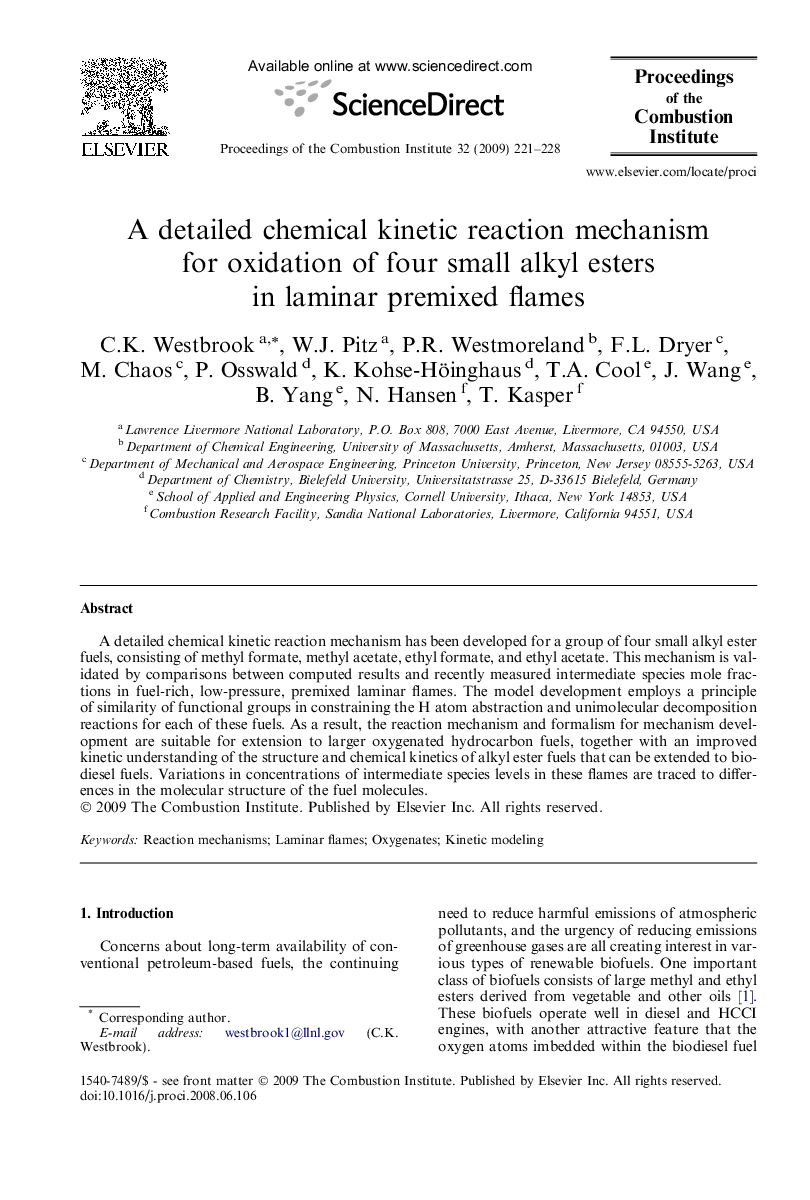| Article ID | Journal | Published Year | Pages | File Type |
|---|---|---|---|---|
| 6679408 | Proceedings of the Combustion Institute | 2009 | 8 Pages |
Abstract
A detailed chemical kinetic reaction mechanism has been developed for a group of four small alkyl ester fuels, consisting of methyl formate, methyl acetate, ethyl formate, and ethyl acetate. This mechanism is validated by comparisons between computed results and recently measured intermediate species mole fractions in fuel-rich, low-pressure, premixed laminar flames. The model development employs a principle of similarity of functional groups in constraining the H atom abstraction and unimolecular decomposition reactions for each of these fuels. As a result, the reaction mechanism and formalism for mechanism development are suitable for extension to larger oxygenated hydrocarbon fuels, together with an improved kinetic understanding of the structure and chemical kinetics of alkyl ester fuels that can be extended to biodiesel fuels. Variations in concentrations of intermediate species levels in these flames are traced to differences in the molecular structure of the fuel molecules.
Related Topics
Physical Sciences and Engineering
Chemical Engineering
Chemical Engineering (General)
Authors
C.K. Westbrook, W.J. Pitz, P.R. Westmoreland, F.L. Dryer, M. Chaos, P. Osswald, K. Kohse-Höinghaus, T.A. Cool, J. Wang, B. Yang, N. Hansen, T. Kasper,
